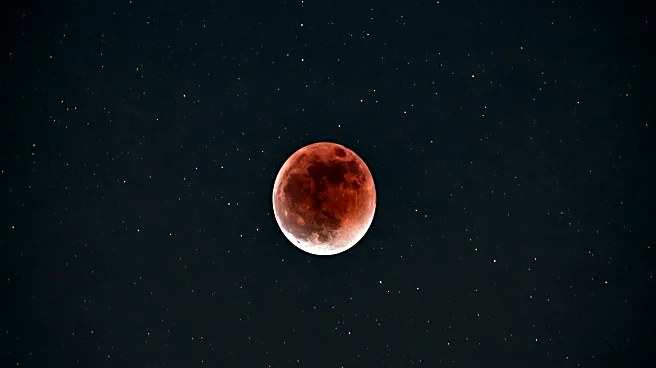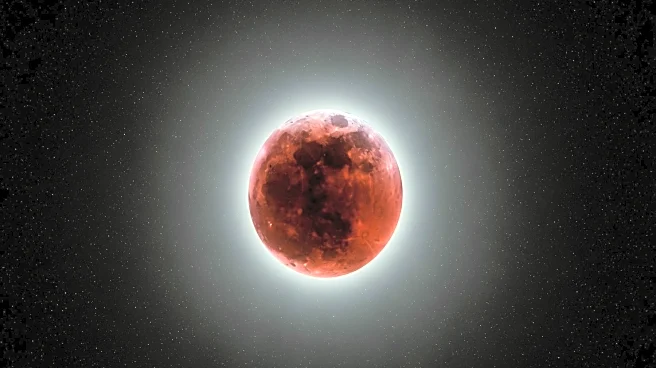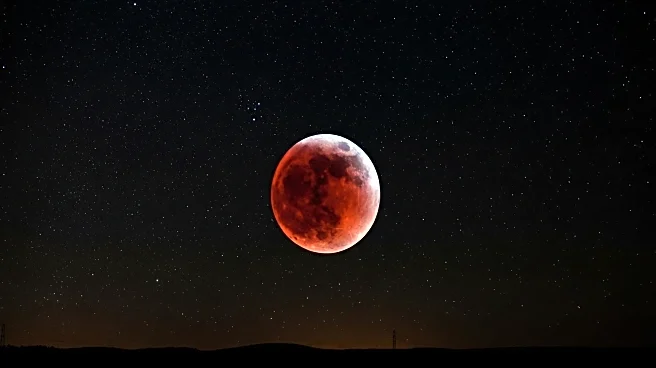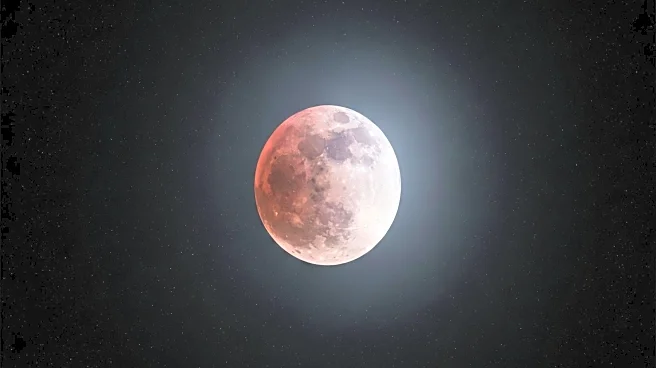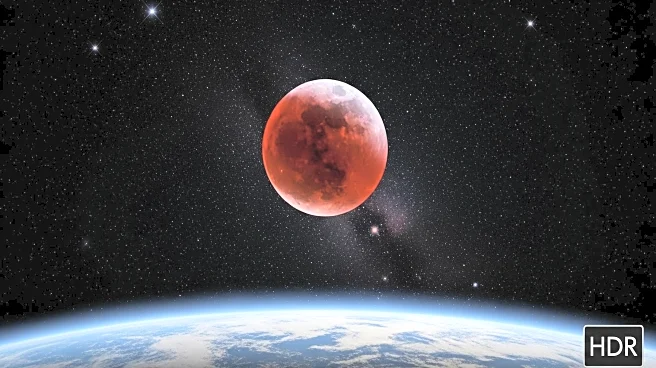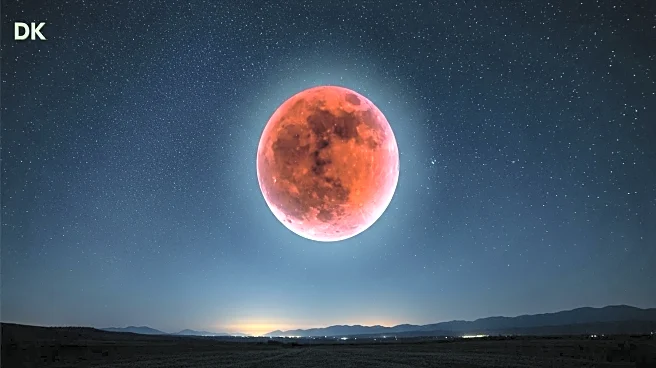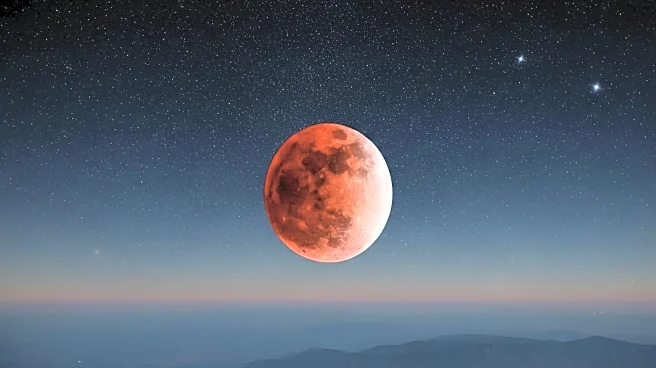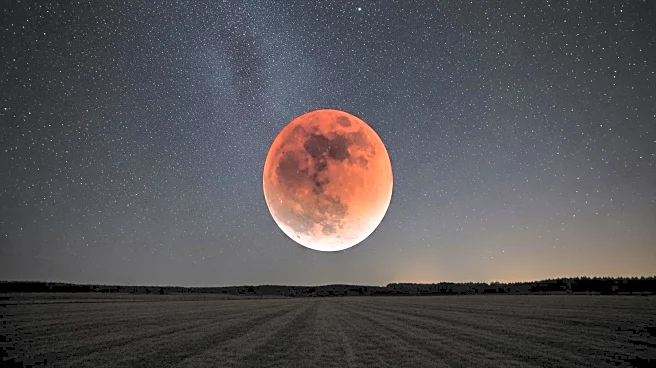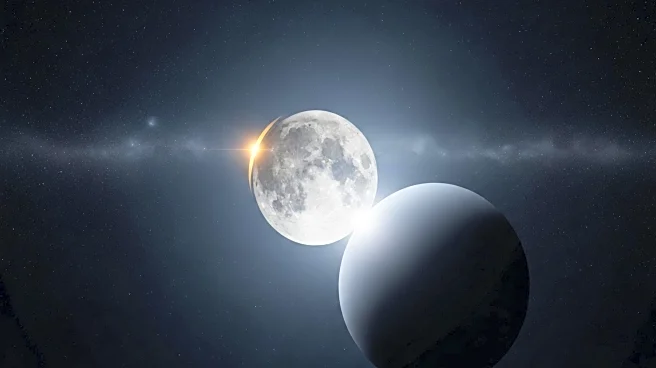What's Happening?
Photographers worldwide captured images of a rare 'blood moon' during a total lunar eclipse. This celestial event occurs when the full moon passes through Earth's darkest shadow, known as the umbra, giving the moon a reddish hue. The eclipse lasted approximately 82 minutes, marking the longest total lunar eclipse since 2022. While the U.S. experienced a 'blood moon' earlier in March, this recent eclipse was visible in Europe, Africa, Asia, and Australia. The phenomenon is caused by Earth's atmosphere scattering shorter wavelengths of light, allowing longer wavelengths like red and orange to reach the moon. The next total lunar eclipse is expected on March 3, 2026, and will be visible over the Americas, Pacific Islands, Asia, and Australia.
Why It's Important?
Total lunar eclipses, such as the 'blood moon,' offer a unique opportunity for scientific observation and public engagement with astronomy. These events can inspire interest in space science and provide educational moments for schools and communities. The visibility of the eclipse across multiple continents highlights the interconnectedness of global astronomical phenomena. Additionally, such events can boost tourism and local economies as enthusiasts travel to optimal viewing locations. The anticipation of future eclipses, like the one in March 2026, can further stimulate interest and planning for educational and observational activities.
What's Next?
The next total lunar eclipse is scheduled for March 3, 2026, providing another opportunity for global observation and engagement. Astronomers and enthusiasts will prepare for this event, potentially organizing viewing parties and educational programs. As technology advances, future eclipses may be captured with even greater detail, enhancing scientific understanding and public appreciation. Stakeholders such as educational institutions and tourism boards may begin planning initiatives to capitalize on the upcoming celestial event.
Beyond the Headlines
Lunar eclipses, while visually stunning, also offer insights into Earth's atmospheric conditions. The scattering of light that causes the 'blood moon' effect can provide data on atmospheric composition and pollution levels. Additionally, these events can foster international collaboration in astronomy, as scientists and enthusiasts share observations and findings. The cultural significance of lunar eclipses varies globally, with some societies attributing spiritual or mythological meanings to the phenomenon.
